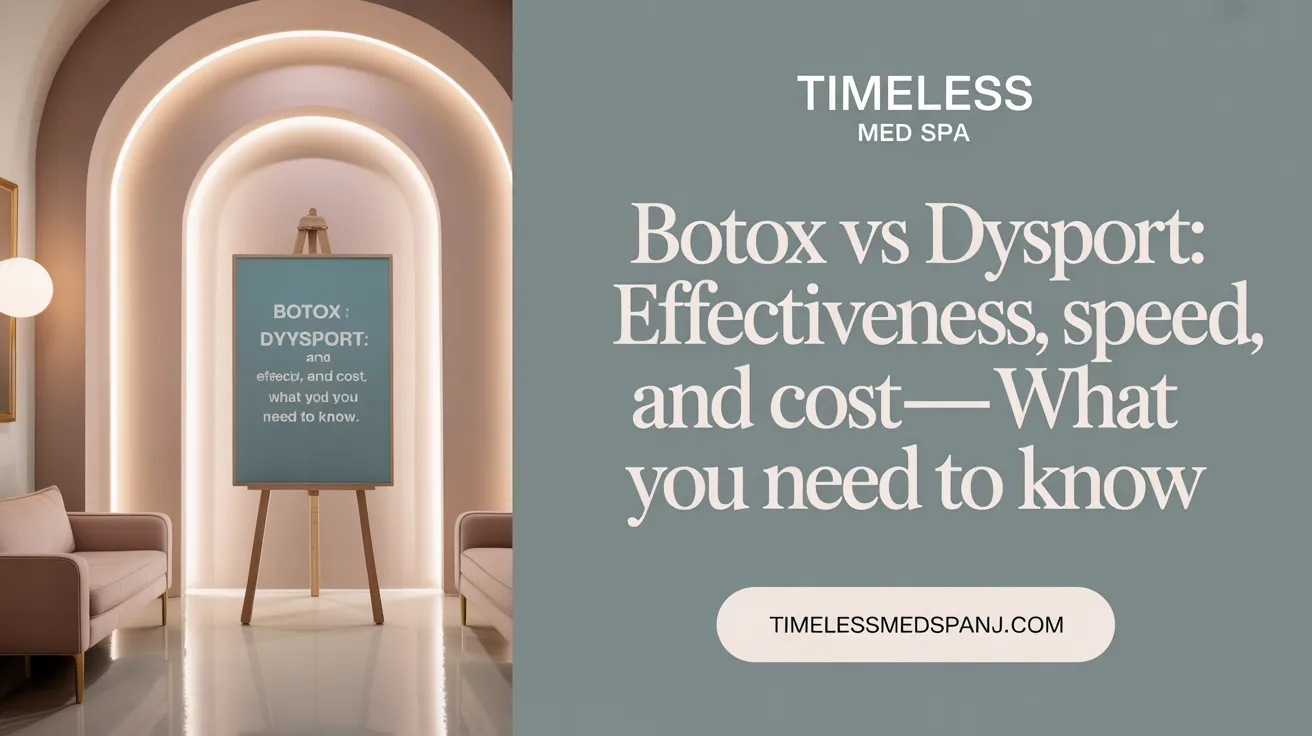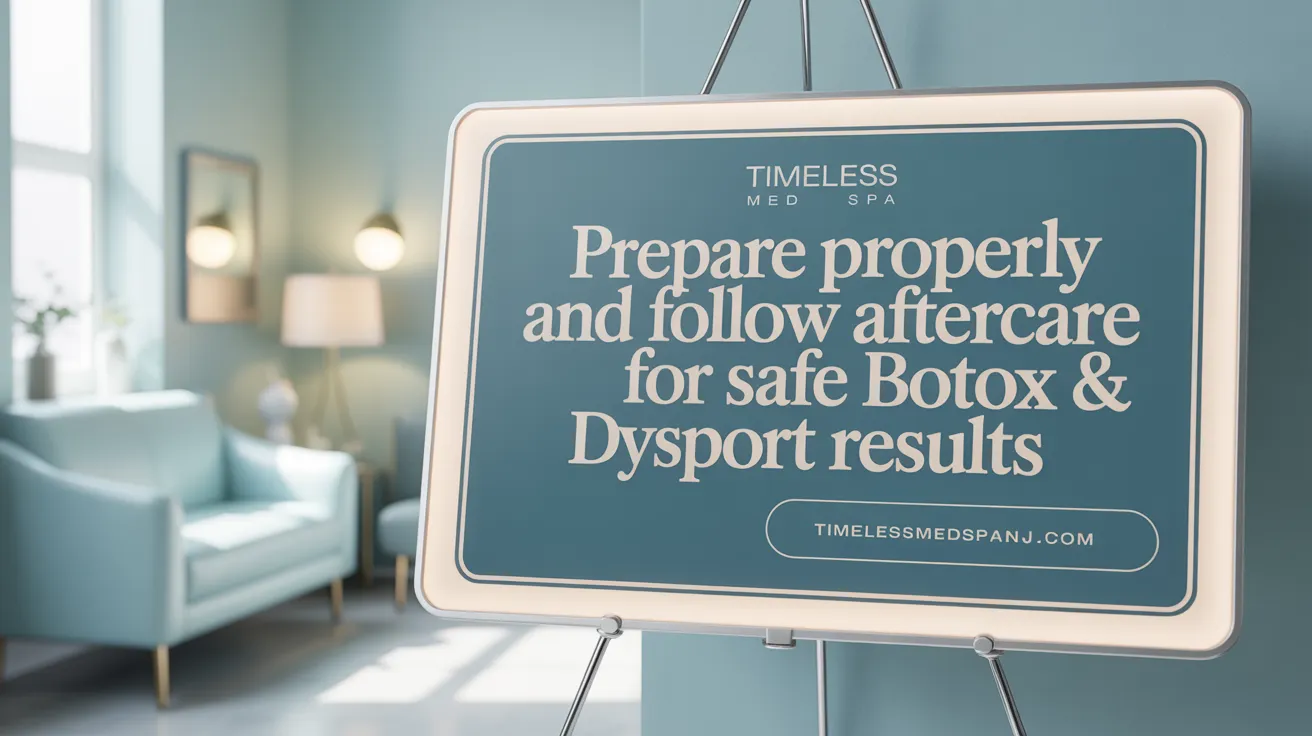Introduction to Botox and Dysport
Botox and Dysport have become household names in cosmetic and medical treatments for muscle-related conditions. Both are injectable neurotoxins derived from botulinum toxin type A that temporarily relax facial muscles to reduce wrinkles and treat various medical issues. As minimally invasive options, they offer natural-looking results without surgery. This article provides comprehensive insights into what these treatments are, how they differ, what benefits and risks they carry, and how to prepare for and recover from injections, helping you make informed decisions.
What Are Botox and Dysport? Uses and Mechanisms
What are Botox and Dysport, and what are their general uses and purposes?
Botox and Dysport are injectable neurotoxins derived from botulinum toxin type A, widely used for both cosmetic and medical treatments. They serve primarily to relax muscles temporarily, decreasing the appearance of wrinkles and fine lines caused by facial expressions, such as frown lines, crow’s feet, and forehead creases. Dysport is often chosen for larger areas or when a quicker onset of results is desired, while Botox is known for longer-lasting effects and precise targeting. Medically, they are FDA-approved for various conditions including chronic migraines, excessive sweating (hyperhidrosis), muscle spasms, and overactive bladder, providing non-surgical options to alleviate muscle overactivity or pain.
How they work to relax muscles
Both Botox and Dysport function by blocking nerve signals that stimulate muscle contractions. When injected into targeted muscles, they inhibit the release of acetylcholine—a chemical messenger at nerve endings—causing the muscles to relax. This muscle relaxation softens wrinkles and prevents new formation caused by repeated movements. The effects typically last around 3 to 6 months, after which muscle activity gradually resumes, necessitating repeat treatments for sustained results.
Differences in formulation and mechanism
Although both are botulinum toxin type A products, Botox and Dysport differ in their formulation and diffusion properties. Botox is more concentrated with a smaller molecular size, leading to more precise, localized effects. Dysport, being more diluted and having smaller molecules, diffuses more rapidly across larger areas, making it suitable for treating broad regions like the forehead or extensive muscle groups. Its faster onset can produce visible results within 2-3 days, compared to Botox, which may take about a week. Despite these differences, both treatments share the common mechanism of muscle relaxation but are used differently depending on the area, desired speed, and duration of effect.
Comparing Botox and Dysport: Effectiveness, Onset, Duration, and Cost

How do Botox and Dysport differ in terms of effectiveness, onset of action, duration, and cost?
Botox (onabotulinumtoxinA) and Dysport (abobotulinumtoxinA) are both popular formulations of botulinum toxin type A used in cosmetic and medical treatments. They are effective at relaxing facial muscles to reduce the appearance of wrinkles, but they have some differences that can influence your choice.
Dysport typically starts working faster, with effects noticeable within 1-2 days, compared to Botox's usual onset of 3-5 days. This quicker response makes Dysport appealing for those seeking rapid results.
When it comes to how long their effects last, both generally provide smoothing results for about three to four months. Some studies suggest Dysport might offer slightly longer-lasting effects, but individual results vary.
The cost comparison is nuanced. Botox is usually priced higher per unit, but the units are more concentrated, so fewer are needed for a treatment. Dysport units are less expensive per unit but are typically administered in larger quantities, often about 2.5 to 3 times more to achieve similar results. As a result, the total cost per session can be comparable for both treatments.
Dysport also tends to diffuse more broadly in the tissue, making it well-suited for larger areas like the forehead, whereas Botox offers more localized effects, ideal for smaller, precise areas such as around the eyes.
In summary, Dysport offers a faster onset with potentially longer-lasting effects and a lower per-unit price, while Botox may be better for precise targeting. Your choice should consider the treatment area, desired timing, and budget.
Benefits and Advantages of Botox and Dysport for Cosmetic and Medical Uses
 Botox and Dysport are popular neuromodulator injections derived from botulinum toxin that provide multiple benefits across cosmetic and medical treatments. Cosmetically, these treatments are highly effective at reducing the appearance of facial wrinkles and fine lines caused by muscle contractions. By relaxing specific facial muscles, they create a smoother, more youthful-looking appearance, often enhancing confidence and self-esteem. For more details, see Botox injections for wrinkle treatment and Dysport cosmetic benefits.
Botox and Dysport are popular neuromodulator injections derived from botulinum toxin that provide multiple benefits across cosmetic and medical treatments. Cosmetically, these treatments are highly effective at reducing the appearance of facial wrinkles and fine lines caused by muscle contractions. By relaxing specific facial muscles, they create a smoother, more youthful-looking appearance, often enhancing confidence and self-esteem. For more details, see Botox injections for wrinkle treatment and Dysport cosmetic benefits.
Medically, Botox and Dysport are used to treat various conditions such as chronic migraines, excessive sweating (hyperhidrosis), cervical dystonia (neck muscle spasms), eyelid twitching, and even certain neurological disorders. Their ability to block nerve signals temporarily relaxes muscles, alleviating pain, reducing muscle overactivity, and improving the quality of life for many patients. Learn more at Medical uses of Botox and Dysport uses.
A significant advantage of both treatments is their minimally invasive nature and quick procedure times, typically lasting just 10 to 30 minutes. Patients experience minimal discomfort and can usually resume daily activities immediately afterward. The effects of Dysport generally appear faster—within 2-3 days—compared to about a week for Botox, and it tends to spread more broadly under the skin, making it ideal for larger areas like the forehead. For more information, see Dysport onset of response and Onset and Duration of Botox Results.
Regular treatments not only maintain their aesthetic and therapeutic benefits but can also serve as a preventative measure against future wrinkle formation. As muscles weaken with ongoing treatments, the skin's surface remains smoother, reducing the deepening of lines caused by repeated facial expressions. Explore more on Botox wrinkle prevention and Preventative Dysport treatments.
When administered by qualified and experienced healthcare professionals, Botox and Dysport are proven to be safe and effective, with a well-established profile supported by FDA approvals for various uses. Side effects are typically mild and temporary, such as bruising, redness, or headache, and serious adverse effects are rare in properly conducted treatments. Overall, these neurotoxin injections remain a versatile, convenient, and reliable option for enhancing appearance and managing a range of medical conditions. For safety and side effect information, see Botulinum toxin safety and effectiveness and Common side effects of Dysport and Botox.
Potential Side Effects and Safety Considerations for Botox and Dysport

What potential side effects, risks, and safety considerations are associated with Botox and Dysport treatments?
Botox and Dysport are popular neuromodulators used for both cosmetic and medical purposes, and when administered by qualified professionals, they possess a high safety profile. Most side effects are mild, temporary, and localized. Common reactions include injection site bruising, redness, swelling, and discomfort, as well as headaches and mild flu-like symptoms in some cases.
Eyes may experience drooping eyelids (blepharoptosis), dryness, or asymmetry if the toxin diffuses into unintended muscles. These effects are generally short-lived and tend to resolve without intervention. However, serious risks, although rare, can occur if the toxin spreads beyond the injection site. Such systemic spread may lead to symptoms akin to botulism, including muscle weakness, difficulty swallowing, breathing problems, and allergic reactions like anaphylaxis (Botulinum toxin safety and adverse effects).
To mitigate these risks, it’s essential that treatments are performed by experienced, licensed healthcare providers. Proper injection techniques, accurate dosing, and thorough patient assessment are crucial (Choosing a qualified dermatologist for Dysport, Professional administration of Dysport). Avoiding treatment during pregnancy and breastfeeding further reduces potential safety issues (Botox and pregnancy precautions, Dysport pregnancy considerations).
Why is the experience of the provider important?
An expert injector understands facial anatomy and can precisely target muscles to avoid unintended diffusion of the toxin. This expertise reduces the chances of adverse effects such as drooping eyelids and asymmetry. Proper technique also minimizes the risk of excessive dosage, which can increase complication probabilities (Importance of proper technique and dosing, Choosing a qualified Botox provider).
Long-term safety and repeated treatments
Current evidence supports the safety of repeated Botox and Dysport injections over time, provided intervals are maintained and doses are not excessive. Long-term studies indicate that, in most cases, these treatments do not cause permanent muscle weakness or facial changes. Regular assessments and follow-up care help ensure continued safety and effectiveness (Repeat Dysport treatments, Maintaining Botox results).
Final notes
Patients should disclose their full medical history, medication use, and any allergies before treatment (Patient disclosure and consultation). Recognizing early signs of adverse effects and seeking prompt medical care are essential (When to contact a doctor after Botox, When to seek medical help after Dysport). When performed correctly, Botox and Dysport remain safe options for facial rejuvenation and therapeutic use, with adverse effects being infrequent and manageable (Safety of Botox and Dysport).
Preparation and Aftercare: Ensuring Safe and Effective Botox and Dysport Treatments

What preparation and pre-treatment guidelines should patients follow to ensure safety and optimize results with Botox and Dysport?
Patients should follow several preparation guidelines for Botox and pre-Dysport preparation tips to ensure safety and optimize results with Botox and Dysport. They should avoid blood-thinning medications, alcohol, and certain supplements like Arnica Montana and Bromelain for at least 24-48 hours before treatment to reduce the risk of bruising. It is important to inform the practitioner of any medical conditions, allergies, previous reactions, and current medications, especially neurological disorders or allergies to Botox or Dysport. Patients should schedule their treatment at least four weeks before significant events, allowing time for full effects and any adjustments. Post-treatment, they should remain mostly upright for four hours, avoid massaging the treated area, strenuous activities, heat exposure, and alcohol, and use cold compresses if needed to manage swelling (Botox and Dysport pre and post care instructions).
What can patients expect before, during, and after receiving Botox or Dysport injections?
Before receiving Botox or Dysport injections, patients will undergo a consultation to discuss their goals, medical history, and suitability for treatment (Botox consultation and preparation, Dysport consultation process). During the procedure, a healthcare professional injects small doses of the neurotoxin into targeted muscles using a fine needle, often experiencing only minor discomfort; the accuracy of injection is crucial to minimize risks such as eyelid drooping (ptosis) (Botox injection procedure overview, Dysport injection procedure). After treatment, patients are advised to avoid rubbing the area, strenuous exercise, or lying down for several hours to prevent the toxin from spreading. Results usually begin to appear within 2-4 days, reaching full effect by 10-14 days, and can last between three to six months, requiring repeat treatments for maintenance (Botox results timeline and aftercare, Dysport results timeline). Post-treatment, most individuals experience minimal side effects like redness or bruising, with serious complications being rare when performed by trained professionals (Side effects of Botox, Dysport side effects and aftercare).
More information can be found by searching for 'Preparation, procedure, and aftercare for Botox and Dysport treatments'.
Key Considerations and Choosing the Right Treatment Option

Factors influencing treatment choice
When considering Botox or Dysport, patients should start by assessing their specific needs and treatment goals. Factors such as the size and location of wrinkles, desired onset time, and how long they want results to last are crucial. Medical history plays a significant role; those on blood thinners, NSAIDs, or supplements increasing bleeding risks should discuss with their provider about preparation to minimize bruising. Professional guidance from a licensed, experienced specialist ensures the safest and most natural-looking outcomes (Choosing a qualified dermatologist for Dysport, Choosing a qualified Botox provider).
Differences in product properties and patient needs
Botox and Dysport work by blocking nerve signals in facial muscles, with some differences affecting their behavior. Dysport tends to spread more easily and acts faster—sometimes within 2-3 days—making it suitable for larger areas like the forehead. Botox, conversely, provides more targeted results with a slightly slower onset, lasting typically 3-6 months. These differences mean advantages in choosing based on area size, speed preferences, and desired natural movement.
Misconceptions and clarifications
Misconceptions abound regarding these treatments. A common myth is that Botox causes a
Final Thoughts on Botox and Dysport Injections
Botox and Dysport represent effective and safe options for those seeking to reduce wrinkles or manage medical muscle-related conditions through minimally invasive injections. Both offer their own advantages—Dysport highlighted by its faster onset and broader spread appropriate for larger areas, and Botox by its precision and slightly longer duration. Understanding their differences, preparing adequately for treatment, and following proper aftercare can optimize results and minimize risks. Consulting a qualified healthcare professional is essential to tailor treatment to your unique needs, clarify misconceptions, and ensure the best possible outcomes. With informed decisions, patients can enjoy not only improved appearance but enhanced quality of life.
